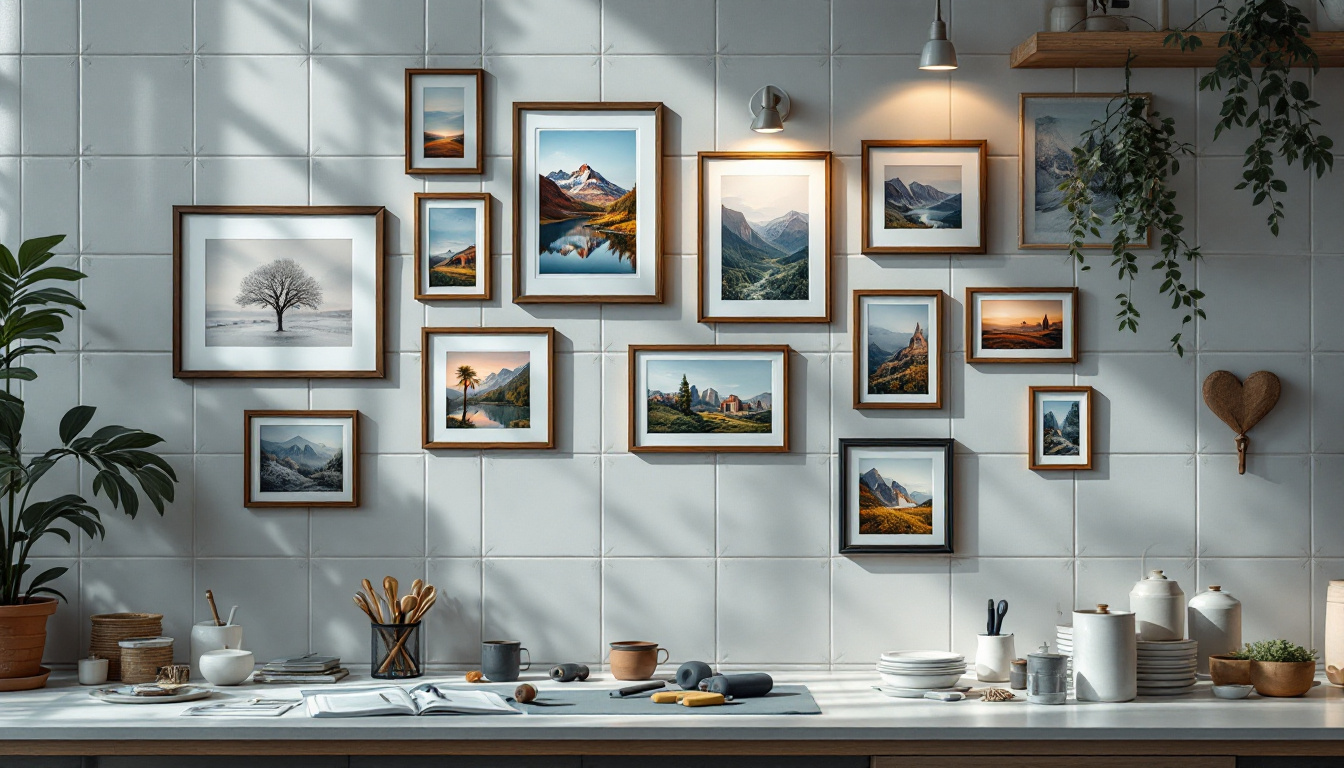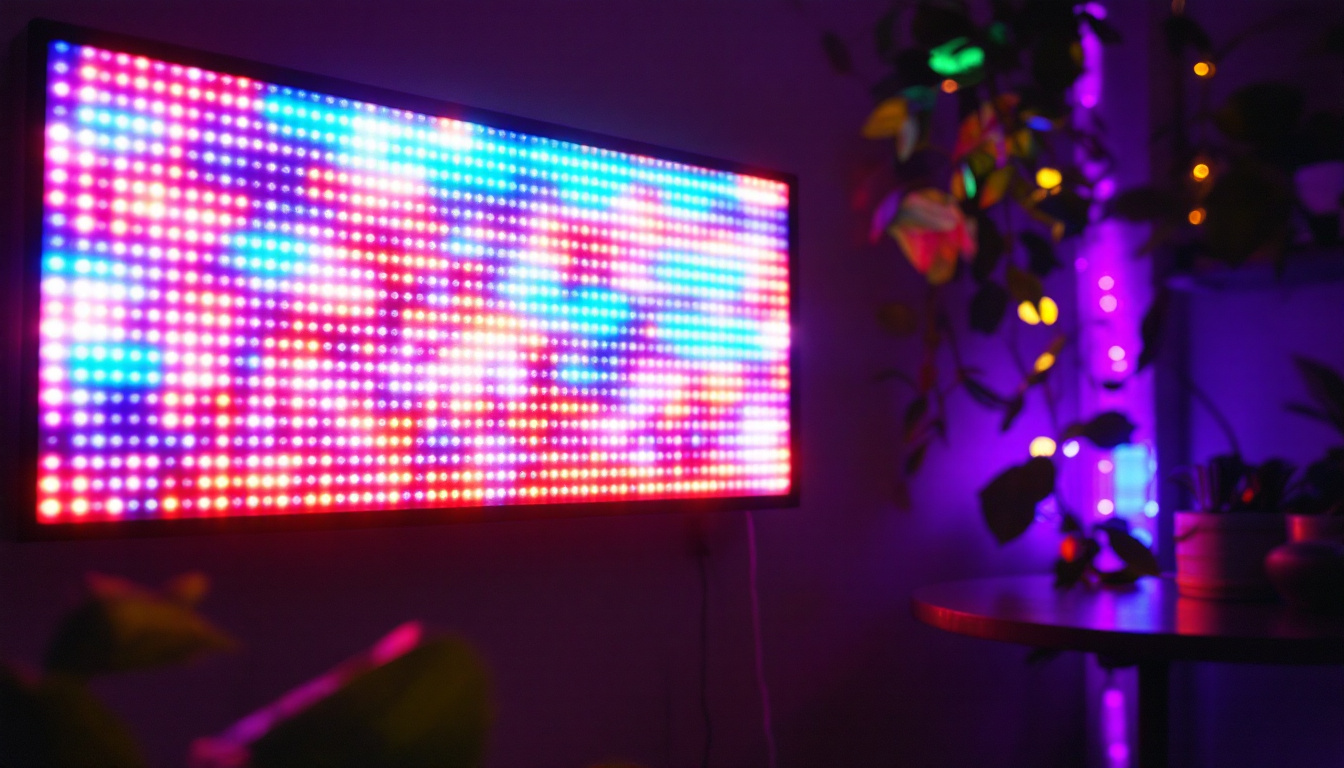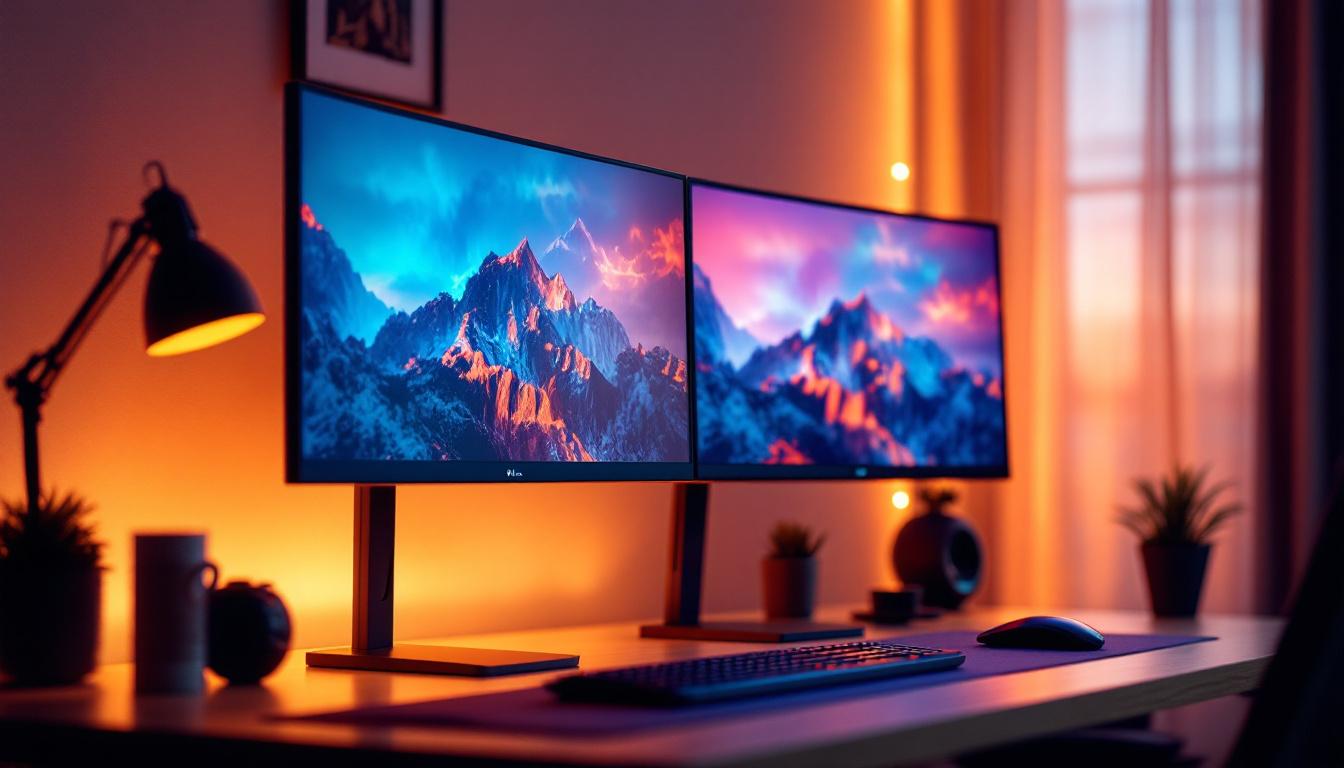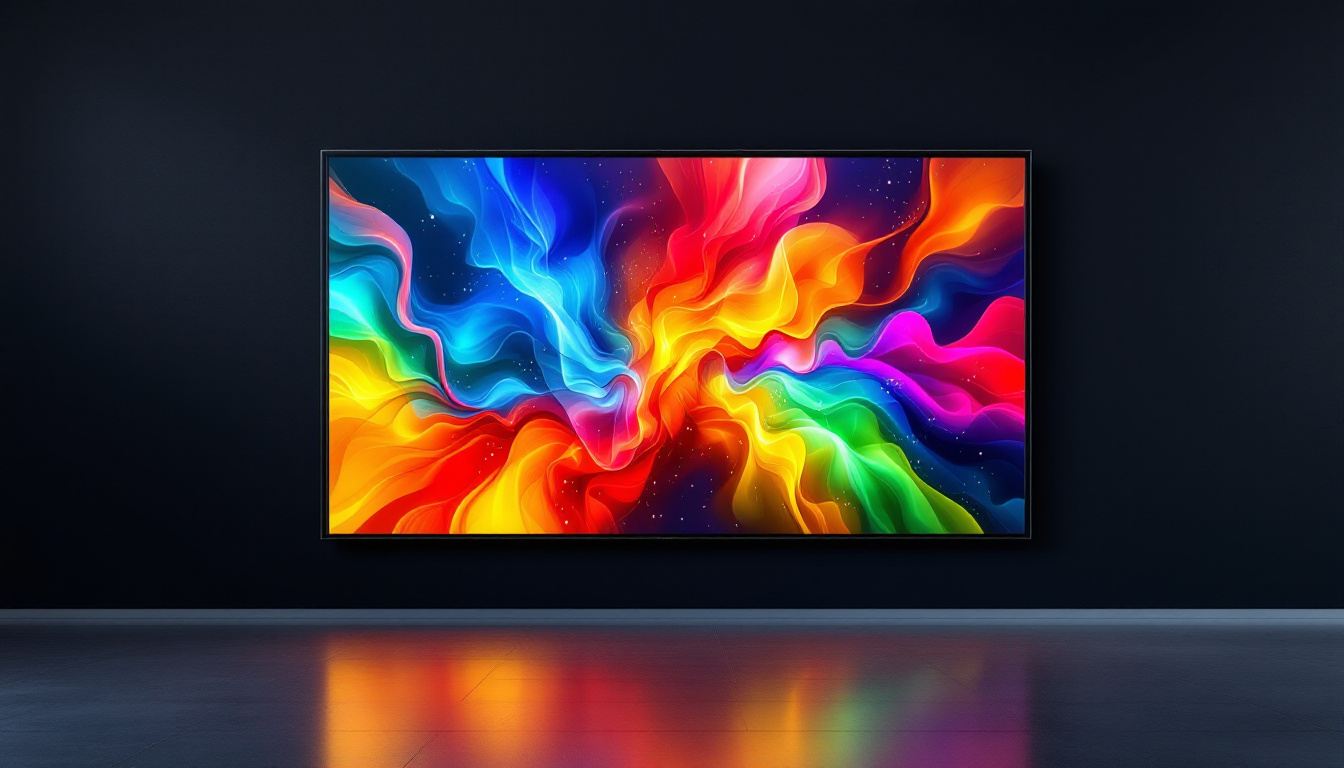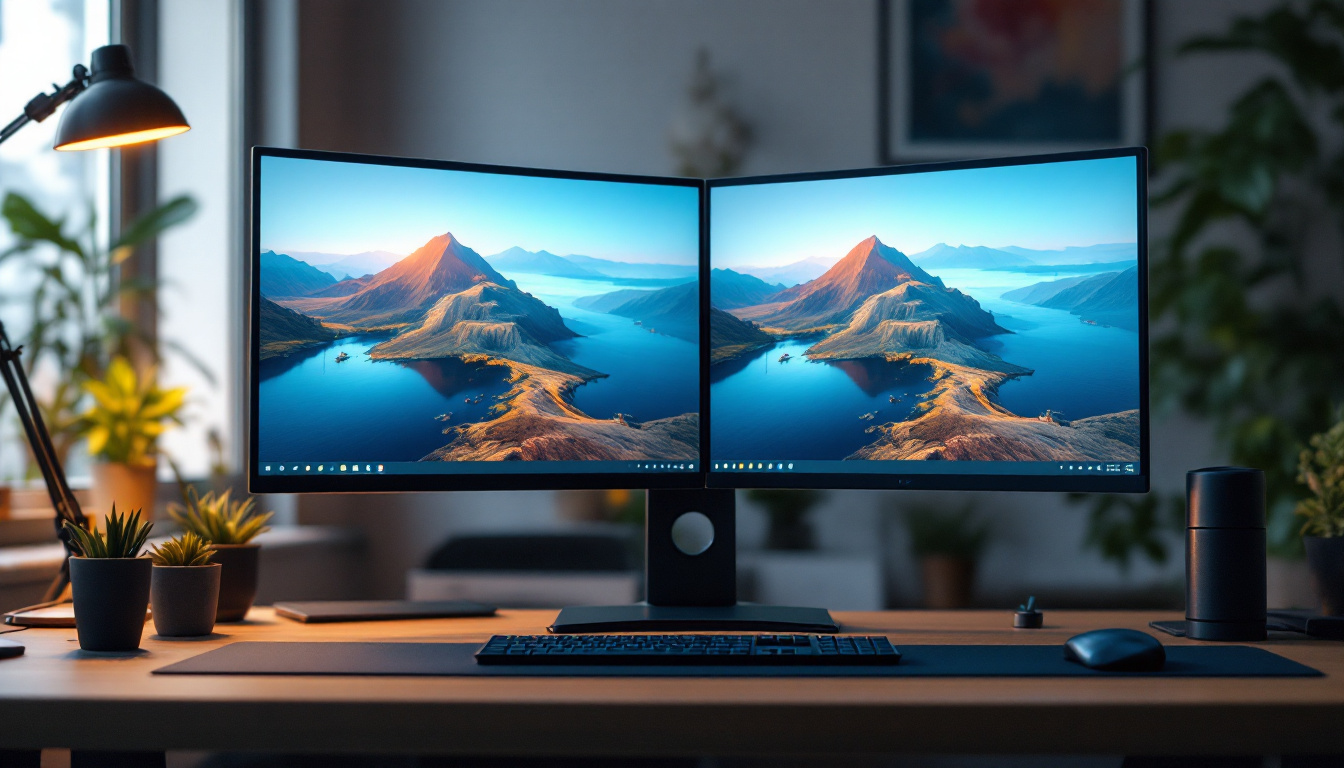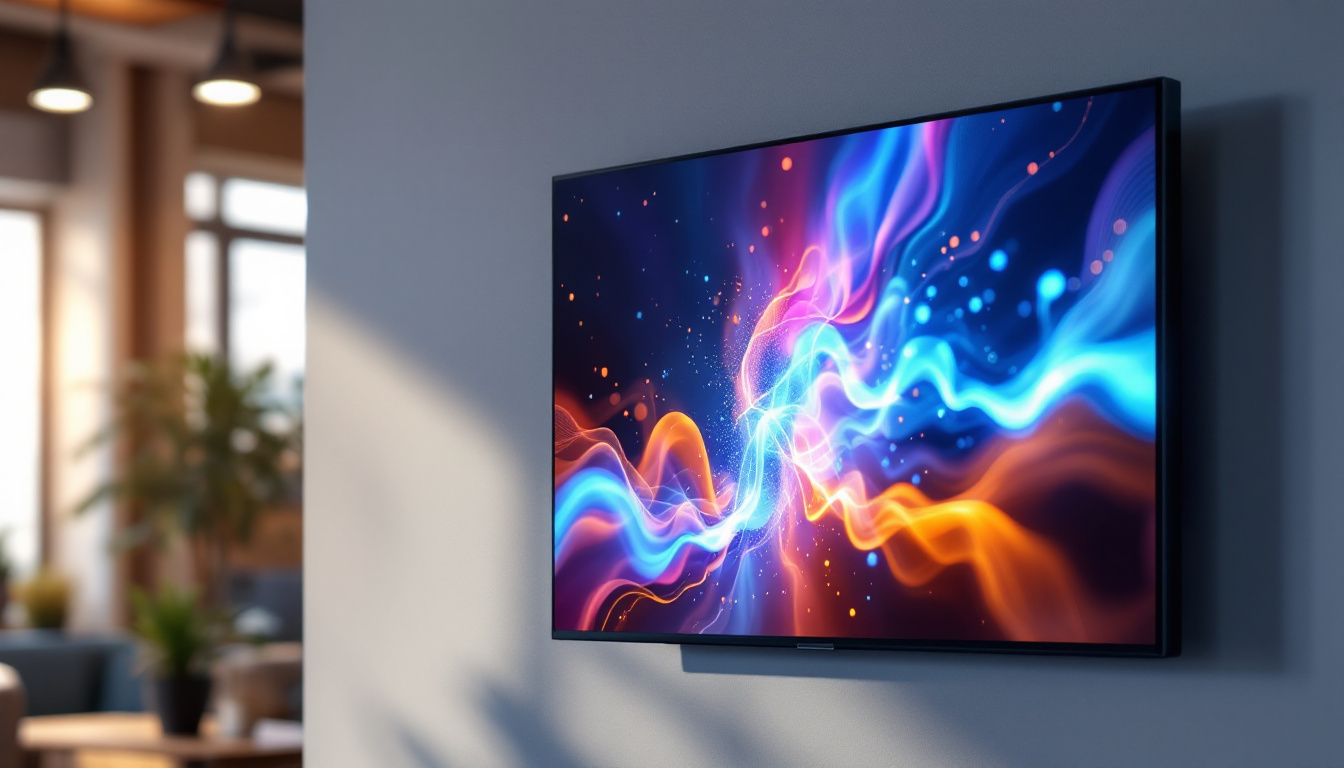Hanging pictures on a tile wall can be a daunting task for many homeowners and decorators. The sleek, glossy surface of tiles can make it difficult to find the right method for securely displaying artwork without causing damage. This guide will explore effective techniques for hanging pictures on tile walls, focusing on the use of LED displays as a modern solution. By the end, you will be equipped with the knowledge to enhance your space beautifully and safely.
Understanding Tile Walls
Tile walls are popular in various settings, from kitchens and bathrooms to living rooms and galleries. They offer a durable and aesthetically pleasing surface that can elevate the overall look of any room. However, the properties of tile can complicate the process of hanging pictures.
Types of Tile
There are several types of tiles, including ceramic, porcelain, glass, and natural stone. Each type has its unique characteristics and requires different considerations when hanging pictures. For instance, ceramic tiles are more forgiving and easier to work with than glass or stone tiles, which may require specialized tools and techniques. Porcelain tiles, known for their density and low porosity, can be particularly challenging due to their hardness, necessitating the use of diamond-tipped drill bits for any installation. Meanwhile, glass tiles can add a stunning visual effect but demand meticulous handling to avoid cracks and chips.
Challenges of Hanging on Tile
The primary challenge of hanging pictures on tile walls is the risk of cracking or damaging the tiles. Traditional methods, such as using nails or screws, can lead to unsightly holes or even breakage. Additionally, adhesive methods may not provide the strength needed for heavier frames, leading to potential falls and damage to both the artwork and the wall. To mitigate these risks, many homeowners opt for specialized mounting solutions designed for tile surfaces, such as suction cup hooks or adhesive strips that are rated for heavier weights. These alternatives not only preserve the integrity of the tile but also allow for a more flexible arrangement of artwork, enabling easy adjustments without the fear of permanent damage.
Moreover, the aesthetic appeal of tile walls can also influence the choice of artwork. Bright, colorful tiles may call for more subdued artwork to create a balanced visual composition, while neutral tiles can serve as a perfect backdrop for bold and vibrant pieces. Understanding the interplay between the tile’s color and texture and the artwork can enhance the overall ambiance of the space. Additionally, incorporating various frame styles can create a dynamic gallery wall effect, further emphasizing the beauty of the tile while showcasing personal tastes and artistic preferences.
Preparing to Hang Pictures
Before proceeding with any hanging method, it is essential to prepare adequately. This preparation involves selecting the right tools, choosing the appropriate location, and measuring accurately.
Choosing the Right Tools
Using the correct tools can make all the difference in successfully hanging pictures on tile walls. Essential tools include a level, a measuring tape, a pencil for marking, and, depending on the method, either adhesive hooks or a drill with a masonry bit. For heavier frames, wall anchors may be necessary to ensure stability. Additionally, it can be beneficial to have a stud finder on hand, especially if you plan to hang larger pieces that require more support. This tool helps locate the wooden beams behind the tile, providing a secure anchor point for your hardware, which is especially important in preventing damage to the wall and ensuring the longevity of your display.
Measuring and Marking
Accurate measurements are crucial for achieving a professional look. Begin by determining the desired height for your picture. A common rule of thumb is to hang artwork at eye level, typically around 57 to 60 inches from the floor. Use a measuring tape to find this height, and mark it lightly with a pencil. If hanging multiple pieces, consider the spacing between them for a cohesive arrangement. For a gallery wall, it can be helpful to lay out the frames on the floor first to visualize the arrangement before committing to the wall. This allows you to experiment with different configurations and ensures that the final display is both visually appealing and harmonious. Remember to take into account the sizes and shapes of the frames, as well as the colors and styles of the artwork, to create a balanced look that complements your space.
Methods for Hanging Pictures on Tile Walls
There are several methods for hanging pictures on tile walls, each with its advantages and disadvantages. The choice of method will depend on the weight of the picture, the type of tile, and personal preference.
Adhesive Hooks
Adhesive hooks are a popular choice for lightweight frames and are ideal for renters or those who prefer not to drill into their tiles. These hooks come in various sizes and strengths, making them suitable for different types of artwork.
To use adhesive hooks, clean the tile surface with rubbing alcohol to ensure a strong bond. Once dry, peel off the backing of the hook and press it firmly against the tile for the recommended duration. Allow the adhesive to cure for the time specified by the manufacturer before hanging your picture.
Drilling into Tile
For heavier frames, drilling into the tile may be necessary. This method requires more preparation and care but can provide a more secure hold. Start by selecting the right drill bit—a masonry bit is essential for tile. Mark the spot where you want to drill, and use painter’s tape to prevent the drill bit from slipping.
Drill slowly and steadily, applying light pressure to avoid cracking the tile. Once the hole is made, insert a wall anchor to provide extra support. Finally, screw in the hook or screw that will hold your picture frame.
Using Picture Rails
Picture rails are another excellent option for hanging pictures on tile walls. This method involves installing a rail along the top of the wall, allowing for easy adjustment of artwork without the need for multiple holes. Picture rails can be particularly advantageous in spaces where artwork may be frequently changed or rearranged.
To install a picture rail, follow the same measuring and marking techniques as before. Secure the rail using appropriate anchors for tile, ensuring it is level. Once the rail is in place, use picture hanging clips or hooks to display your artwork.
LED Displays: A Modern Solution
In recent years, LED displays have gained popularity as a contemporary way to showcase artwork. These displays offer a unique approach to hanging pictures, providing flexibility and a modern aesthetic.
Benefits of LED Displays
LED displays come with several advantages. They allow for easy changes in artwork without the need for drilling or damaging walls. Additionally, many LED displays offer backlighting, which can enhance the visual appeal of the artwork and create a stunning focal point in any room.
Moreover, LED displays can be integrated with smart home technology, allowing users to change the displayed artwork with a simple command or app. This feature is particularly appealing for those who enjoy rotating their art collection frequently.
Installation of LED Displays
Installing an LED display on a tile wall is relatively straightforward. Begin by selecting the desired location and ensuring that the wall can support the weight of the display. Follow the manufacturer’s instructions for installation, which typically involve securing the display to the wall using brackets or anchors.
Ensure that the display is level and securely attached before connecting it to a power source. Once installed, users can easily switch out the displayed images, allowing for a dynamic and ever-changing art experience.
Maintenance and Care for Tile Walls
Maintaining tile walls is essential to ensure longevity and preserve the aesthetic appeal of the space. Regular cleaning and care can help prevent damage and keep the tiles looking their best.
Cleaning Tile Walls
Cleaning tile walls should be done with care to avoid damaging the surface. Use a mild detergent mixed with warm water and a soft cloth or sponge to wipe down the tiles. Avoid abrasive cleaners or scrubbers, as these can scratch the surface and diminish the shine of the tiles.
For grout lines, a mixture of baking soda and vinegar can help lift stains and restore brightness. Apply the mixture, let it sit for a few minutes, and then scrub gently with a soft brush before rinsing with water.
Inspecting for Damage
Regularly inspect tile walls for any signs of damage, such as cracks or chips. Addressing these issues promptly can prevent further deterioration. If a tile is damaged, consider replacing it to maintain the integrity of the wall.
Conclusion
Hanging pictures on tile walls may seem challenging, but with the right tools and techniques, it can be a straightforward process. Whether opting for traditional methods or embracing modern LED displays, there are numerous ways to showcase artwork effectively.
By understanding the properties of tile, preparing adequately, and selecting the appropriate hanging method, anyone can create a beautiful display that enhances their space. Regular maintenance and care will ensure that both the artwork and the tile walls remain in excellent condition for years to come.
Embrace the beauty of your tile walls and let your creativity shine through by displaying your favorite pieces of art with confidence.
Discover the Future of Art Display with LumenMatrix
Ready to take your tile wall art displays to the next level? LumenMatrix is at the forefront of LED display technology, offering a wide range of innovative solutions that can transform any space into a dynamic gallery. From Indoor LED Wall Displays that make your artwork pop to Custom LED Displays tailored to your unique space, LumenMatrix has the perfect solution to meet your needs. Elevate your visual experience and make a lasting impression with our cutting-edge LED displays. Check out LumenMatrix LED Display Solutions today and see how we can help you showcase your art with the brilliance it deserves.

